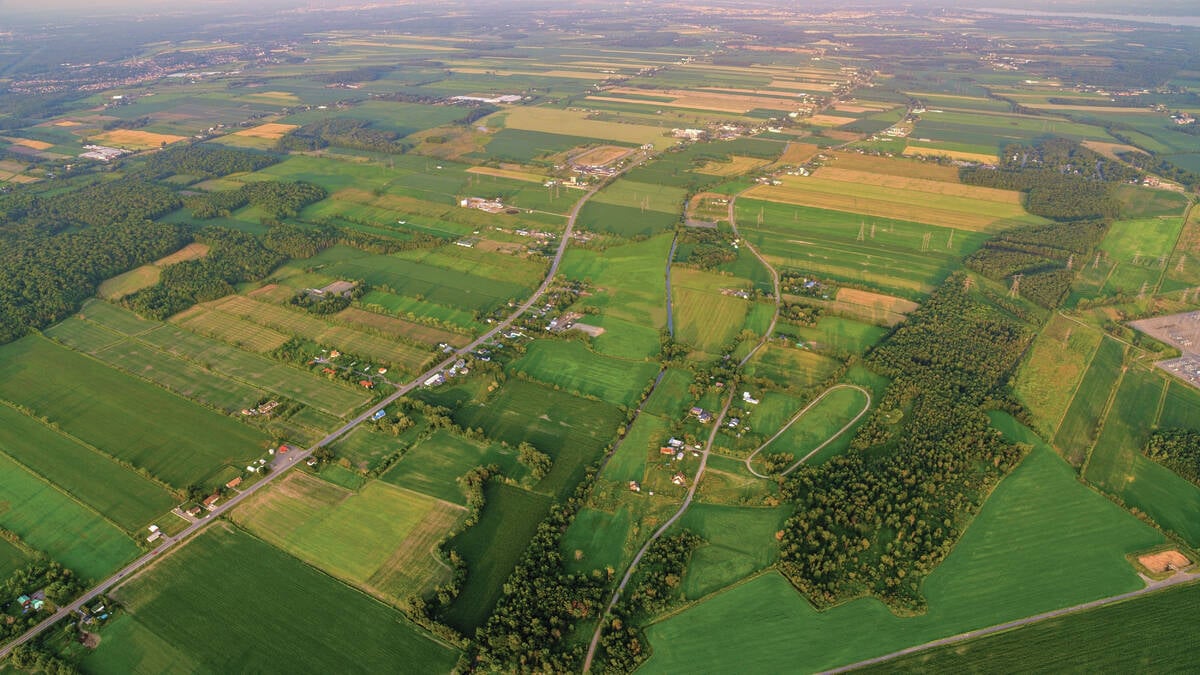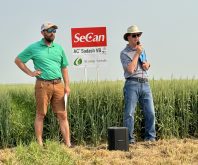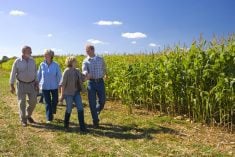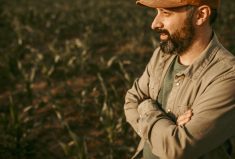In Saskatoon in mid-January, Kristjan Hebert was at the podium of a banquet room, telling the crowd of farmers something that farmers have said all through the generations. Hebert and his family want to build a legacy farm.
“And our definition of legacy is extremely simple,” Hebert continued. “We want to leave the land and the financial statements in a better state when we’re done than when we took it over. That’s it.”
Yet creating a legacy farm has always been easier said than done, and today is no different. In fact, today’s challenges in some ways are different than ever before, and maybe tougher too.
Read Also

Farm peer groups still provide value
A look at whether farm peer groups are still relevant.
Even so, Hebert is hopeful that he’s found the approach that will get his family to their dream.
It’s to value relationships, and to find a string of opportunities to make small improvements rather than looking for a chance to hit one out of the park. But what does that mean in actual practice?
Looking for the five per cent
Hebert earned a commerce degree at the University of Saskatchewan and worked winters as a chartered accountant with Meyers Norris Penny (MNP) before going back to the farm full-time in southeastern Saskatchewan. It was great training, he says. Not only did he have great mentors at MNP, but he also met with about 50 farmers a year, and he describes that on-the-job education as “farm management on steroids.”
When Hebert was at Manitoba Ag Days with his farm crew Country Guide caught up with him shortly after his keynote presentation. Hebert tends to book meetings at farm shows since they draw movers and shakers from across the Prairies. Meanwhile, his farm crew scouts the grounds for practical tools to help back home.
This approach also fits a farm management philosophy that focuses on improving things five per cent at a time, rather than chasing unicorns.
The Hebert farm team looks first for improvements in production, Hebert says. “We use an immense amount of inputs, but in the right spot at the right time and the right source.”
On the Hebert farm, that means variable rate nitrogen and potash. They use sectional control on every farm implement so inputs aren’t over-applied. They grid soil test every four acres to make sure they apply the right rate of nutrients to every acre and maximize yield potential.
But like everything else on the Hebert farm, the focus is on integrating the best ideas into a complete package that delivers capital efficiency.
On the operations side, for instance, it means timing fills for the seed drill, to keep them under half an hour. It also means that a pit crew fills that drill, greases the conveyor, and fuels it while the operator takes a much-needed break. And it also means encouraging suggestions from the crew to make things run better.

It’s called a learning mentality, Hebert says, and it applies to the entire organization. It also signals a cultural value that permeates the farm. It’s being relentless in the search for improvement.
Hebert’s motto is that if it ain’t broke, you haven’t looked hard enough. You can always find someone who is doing something better than you are, he says.
In fact, as a farmer, that’s actually a big part of your job.
Hebert practices what he preaches. In January, he and his farm team were creating repair budgets for each implement, so they can allocate costs to each quarter, based on previous years.
“So if we’re two or three thousand bucks over that, why are we over?” It could be as simple as returning a wobble box, he says.
“It doesn’t sound like a big deal, but it’s 20 cents an acre, and every time you do that, it adds up to a dollar or two fast.”
Hebert says they get pretty excited about finding small ways to improve things on the farm.
“Our repairs and maintenance dropped $5 an acre this year,” he says. “I was ecstatic.”
It’s about the people
While Hebert’s accounting background might help explain why he’s a fan of incremental changes, operating margins, and the details of accrual accounting, he values relationships at least as much as numbers.
Marketing is just one example. Hebert says they’re very comfortable with futures and options. But at the core of their marketing plan are their relationships with buyers.
“That almost means more than price a lot of times,” he says. “That’s another way I’d say we maximize our top end.”
Hebert says his wife, Theresa, his parents and his crew are what make the farm. He and Theresa are both very goal-oriented and were married young, so Hebert has benefited from their partnership since he was 20 years old.
His parents, Louis and Karen, trusted him enough to hand over a large degree of control early on, he says, although they remain critical to the farms.
Plus, the crew works like they’re family, Hebert says. In fact, he refers to them as family with a different last name, and Hebert Grain Ventures’ full-time employees include Bryce Olsen, Lori Dorma, and Travis Castle.
Employees have come to the farm through referrals and Twitter. Lori Dorma, an accountant, was Hebert’s co-worker at MNP. She divides her time between the grain farm and the Hebert’s risk management consulting company, which is associated with Global Ag Risk Solutions.
Hebert’s recruitment strategy doesn’t focus on resumés. “It’s ‘Come have a coffee with me,’ and it’s a lot of gut feeling.”
Of course, keeping good people is another matter. Employees are well paid, Hebert says, and they receive benefits and pension contributions. In that way, it’s not much different from working at MNP.
The crew is also always looking for ways to improve the farm and their own performance. For example, employees fill out their own performance reviews regularly. Each crew member comes up with three personal strengths and three areas they’d like to improve in. They also provide the same critique of the farm as a whole.

But perhaps the most important staff retention strategy is the workplace culture. It’s driven by two principles. The first is that when workers see someone doing a task that they’re better suited to, they should jump in.
As a leader, part of Hebert’s job is to make sure everyone understands their roles, and that they know they’re as important as everyone else. “It doesn’t matter if you’re picking rocks, running a combine or talking to the banker. All those things have to get done at the same level of importance. It’s just whose skill set fits it better.”
The second principle is that they are a team, Hebert says. That means if someone is shovelling grain at 5:45 p.m., everyone jumps in to help to get the job done more quickly instead of leaving for the day.
The approach is designed to let people know their roles, feel valued, and yet avoid the “it’s not my job” mentality that simmers in some workplaces.
Hebert knows he can’t do it all. He hires an agronomist. He’s “awful” at mechanics, he says, but Louis, Bryce, and Travis have that covered. He says he also has trouble keeping focused on one thing for long. He’s like a boat motor, he says, and so Theresa, Lori, and Karen make sure things get done in his wake.
Perhaps the proof is that when he’s asked how he figured out how to build such a positive workplace culture, he hesitates, and takes time to consult with some of his nearby crew members. He’s not sure where he picked up his human resource skills, he admits. His parents’ farm didn’t have many employees, and he says it’s hard to build that culture until you have a team.
But he’s been working on it for a few years, ever since he took the Executive Program for Agricultural Producers at Texas A&M.
“That course really opened my eyes to what a network and a team culture could bring to a business,” Hebert says.
It turns out that this team culture, plus the focus on small improvements, has allowed Hebert Grain Ventures to do some pretty remarkable things, such as seeding 24 hours a day, seven days a week.
But why go 24/7?
Seeding is hectic for any farm, but few are as ambitious as the Hebert farm. They’ve been seeding round the clock, in shifts, since Hebert came back from that executive program in Texas a few years ago. Hebert says Danny Klinefelter, an economist at Texas A&M, “is the whole reason we run 24 hours.”
But why do it? Hebert responds that seeding 24/7 allows the farm to use its machinery more efficiently. They can effectively seed more ground with less capital. It’s part of the reason they’ve grown the farm from 3,500 acres to somewhere between 11,000 and 12,000 seeded acres since 2004.
The 24-hour shift is part of their culture now, Hebert says. The team, which includes “very dependable” seasonal help, expects it.
“If we take a day to just kind of ease into it, it’s almost like a let-down.”
But implementing round-the-clock seeding operations wasn’t painless. Hebert describes a typical day on the farm as “organized chaos,” but he says there are days when they cross into gong show territory.
“We crossed that line a lot more six years ago than we do now,” he says.
Over the last six years, the farm team has gotten a lot better at figuring out roles, such as who is running the seed drills, who is running product and keeping the sprayer ahead, and who’s supplying fuel. More people can step into different roles now, Hebert says. And the crew works in shifts to prevent fatigue.
They have standard operating procedures to keep people on the same page and avoid wrecks. For example, they want people to check the oil before starting any big motors on the farm. To keep everyone honest, they zip-tie keys to the oil dipsticks a couple of times a year. Louis likes to zip-tie keys the most, so the crew did it back to him the other day, Hebert laughs.
Despite the fast pace during seeding and harvest, they try to keep things enjoyable. Louis will have people laughing in the midst of the busy season, Hebert says. And they always shut down for half an hour for supper, when Theresa and Karen run fresh lasagna and garlic toast to the field (in addition to running combines and handling other tasks). To make the cooks’ jobs easier, the farm bought an old motor home so they could keep slow cookers and other kitchen implements in one mobile place.
Hebert loves seeding and harvest, and he plans to be around for that part of it forever. “But every other day of the year, I want a team built that can completely handle all situations without me.”
That would free him up to handle the business side, which is where his strengths lie. The farm isn’t there yet, mainly because they’ve expanded aggressively over the years, but they’re getting better, he says.
As we end the interview, I ask Hebert whether he ever wondered whether coming back to the farm full-time was the wrong decision.
“No,” he answers after a brief pause to reflect. “I guess I wondered why I didn’t do it earlier.”
















